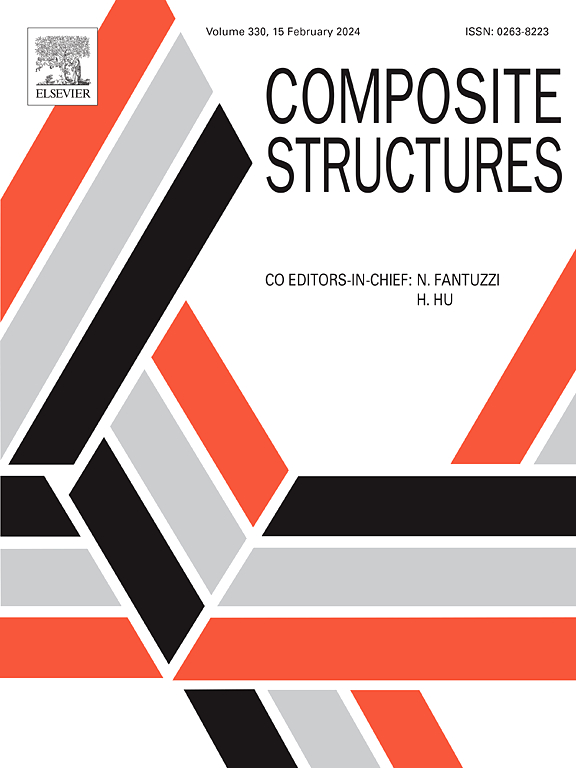Influence of ply thickness on transverse cracking onset, damage progression in thin ply composites and impact on mechanical performance
IF 6.3
2区 材料科学
Q1 MATERIALS SCIENCE, COMPOSITES
引用次数: 0
Abstract
Composite structures employing thin ply materials have gained significant attention in aerospace and high-performance applications. These materials offer the potential for improved mechanical performance and enhanced resistance to damage compared to composite laminates with thicker plies due to the added transverse strength that can potentially reduce microcracking. However, in quasi-isotropic layup structures, stress concentrations may develop due to the irregular arrangement of the individual layers stacked up in different orientations, leading to various forms of damage initiation and progression. The type and direction of loading, as well as factors such as ply thickness and ply stacking orientation play critical roles in this configuration. Recent studies have demonstrated the ability of thin ply laminated composites to mitigate damage progression, such as transverse micro-cracking, structural delamination’s, and splitting under static, fatigue and impact loadings. This work investigates and quantifies the damage characteristics in carbon fiber/toughened epoxy thin-ply laminates with single ply thicknesses of 70 µm for different laminate sequences under quasi static loading conditions. The results show that addition of thin plies within the composite laminate enhanced the mechanical performance. This improvement is achieved by reducing the damage progression in the thicker plies as a result of the suppression of transverse crack intensity.
求助全文
约1分钟内获得全文
求助全文
来源期刊

Composite Structures
工程技术-材料科学:复合
CiteScore
12.00
自引率
12.70%
发文量
1246
审稿时长
78 days
期刊介绍:
The past few decades have seen outstanding advances in the use of composite materials in structural applications. There can be little doubt that, within engineering circles, composites have revolutionised traditional design concepts and made possible an unparalleled range of new and exciting possibilities as viable materials for construction. Composite Structures, an International Journal, disseminates knowledge between users, manufacturers, designers and researchers involved in structures or structural components manufactured using composite materials.
The journal publishes papers which contribute to knowledge in the use of composite materials in engineering structures. Papers deal with design, research and development studies, experimental investigations, theoretical analysis and fabrication techniques relevant to the application of composites in load-bearing components for assemblies, ranging from individual components such as plates and shells to complete composite structures.
 求助内容:
求助内容: 应助结果提醒方式:
应助结果提醒方式:


